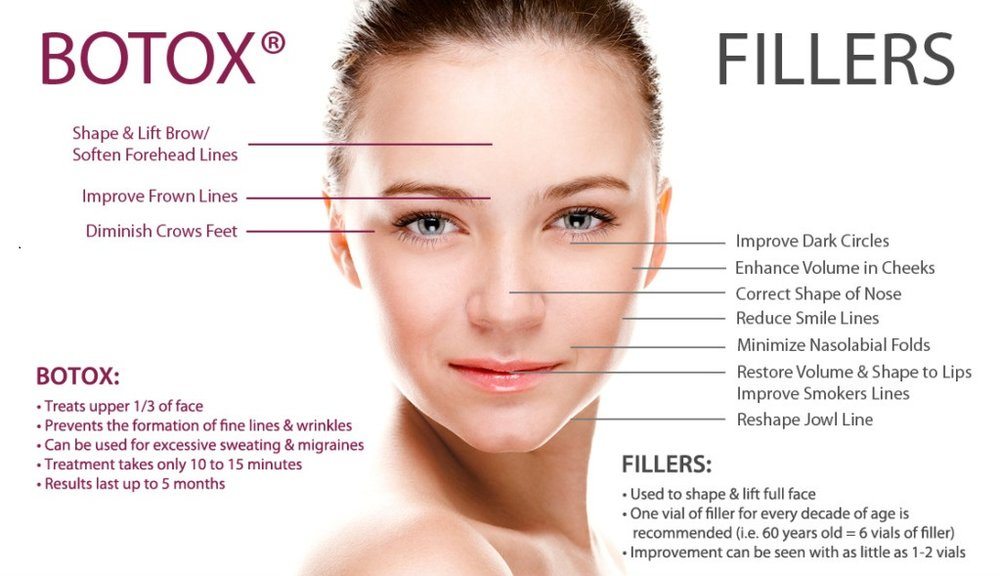Dermal Fillers

Dermal Fillers: Definition and Characteristics
What are Dermal Fillers?
Dermal fillers are gel-like substances injected beneath the skin to restore lost volume, smooth wrinkles, enhance facial contours, and rejuvenate the skin‘s appearance. They are widely used in cosmetic procedures to correct signs of aging and improve skin texture.
Characteristics
Types of Dermal Fillers
- Hyaluronic Acid (HA) Fillers: The most common type, made from a natural substance found in the skin that attracts water and adds volume. Brands include Juvederm, Restylane, and Belotero.
- Calcium Hydroxylapatite (CaHA): A mineral-like compound that stimulates collagen production, used for deeper wrinkles and facial contouring.
- Poly-L-lactic Acid (PLLA): A biodegradable synthetic polymer that promotes collagen synthesis over time, used for volumizing.
- Polymethylmethacrylate (PMMA): A semi-permanent filler consisting of microspheres suspended in collagen, used for deeper wrinkles and scars.
Mechanism of Action
Dermal fillers physically fill spaces by replenishing lost volume, which smooths lines and restores facial contours. Particularly, hyaluronic acid fillers bind and attract water molecules, adding hydration and volume. Beyond volumizing, some fillers stimulate fibroblasts to increase collagen production, improving skin elasticity and promoting long-term rejuvenation.
Uses
- Softening wrinkles and fine lines
- Enhancing lips, cheeks, and jawline contours
- Correcting facial asymmetry and volume loss due to aging or medical conditions
- Improving the appearance of scars and depressions
Clinical Significance
Dermal fillers offer a minimally invasive alternative to surgical facelifts with quick recovery times and immediate results. Effects are temporary to semi-permanent depending on the filler type and injection technique, typically lasting from 6 months to 2 years. Proper patient selection, injection technique, and awareness of potential side effects such as bruising, swelling, and rare allergic reactions are crucial for safe and effective outcomes.
Key Points
- Dermal fillers restore facial volume and smooth wrinkles through injection of gel-like substances.
- Various types exist including hyaluronic acid, CaHA, PLLA, and PMMA, differing by composition and duration.
- Fillers provide both immediate volumizing and long-term collagen stimulation.
- Safe use requires expert assessment, technique, and management of side effects.
Consult with Our Team of Experts Now!
For personalized consultation on dermal filler treatment as well as regenerative treatment options using Cellular Therapy and Stem Cells and safe administration, consult with our board-certified dermatologists and cosmetic specialists.
References:
- Sclafani AP. Injectable Fillers: Classification, Indications, and Injection Techniques. Dermatol Ther. 2025 Apr;38(4):e16353. doi:10.1111/dth.16353. Available at: https://doi.org/10.1111/dth.16353
- Narins RS, et al. Biphasic vs Monophasic Hyaluronic Acid Fillers: Mechanisms and Clinical Considerations. Dermatol Surg. 2025 Mar;51(3):347-353. doi:10.1097/DSS.0000000000003605. Available at: https://pmc.ncbi.nlm.nih.gov/articles/PMC11892339/
- Cox SE, et al. Calcium Hydroxylapatite and Poly-L-lactic Acid Dermal Fillers: Biostimulatory Fillers for Facial Volume Restoration. J Drugs Dermatol. 2024 Nov;23(11):1298-1304. doi:10.36849/JDD.2024.4232. Available at: https://pubmed.ncbi.nlm.nih.gov/34274036/
- Huang J, et al. Recent Advances in Injectable Biomaterials and Dermal Fillers for Skin Rejuvenation: A Comprehensive Review. J Mater Sci Mater Med. 2025 Sep;36(9):130. doi:10.1007/s10856-025-06827-3. Available at: https://doi.org/10.1007/s10856-025-06827-3
- Urdiales-Galvez F, et al. Dermal Fillers: From Rejuvenation to Regeneration. Plast Reconstr Surg Glob Open. 2025 Jan;13(1):e38643. doi:10.1097/GOX.00000000000038643. Available at: https://doi.org/10.1097/GOX.00000000000038643















